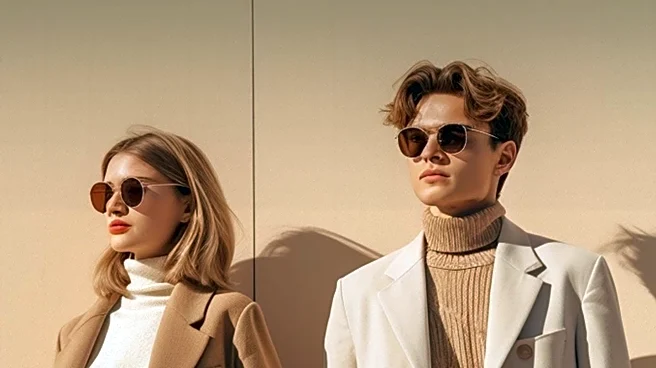What is the story about?
What's Happening?
Fashion trends for first date outfits have evolved significantly, as highlighted by Vogue editors. The traditional expectation of wearing high heels and dresses has shifted towards more casual and comfortable attire, such as jeans and tees, which can be styled to look sophisticated. The change reflects a broader movement away from dressing to appeal to the male gaze, focusing instead on personal comfort and style. Vogue editors shared their personal preferences, ranging from silk skirts paired with tank tops and jackets to double denim ensembles accessorized with chunky jewelry. The emphasis is on outfits that are both comfortable and stylish, allowing individuals to feel authentic and confident during their dates.
Why It's Important?
The shift in first date fashion trends signifies a broader cultural change in how individuals approach personal style and self-expression. This evolution reflects a growing emphasis on comfort and authenticity over traditional gender norms and expectations. As fashion becomes more inclusive and diverse, it allows individuals to express their identities more freely, impacting the fashion industry by driving demand for versatile and comfortable clothing options. This trend could influence retail strategies, encouraging brands to focus on casual yet chic designs that cater to modern consumers' preferences.
What's Next?
As fashion continues to evolve, brands may increasingly focus on creating versatile clothing lines that blend comfort with style. This could lead to collaborations between designers and influencers to develop collections that resonate with contemporary fashion sensibilities. Additionally, fashion media may continue to highlight personal style stories, encouraging consumers to explore and define their unique fashion identities. The industry might also see a rise in sustainable fashion practices, as consumers seek clothing that aligns with their values and lifestyle choices.
Beyond the Headlines
The changing fashion landscape also raises questions about the role of fashion in societal norms and gender expectations. As individuals move away from dressing to conform to traditional standards, it challenges the fashion industry to rethink its approach to design and marketing. This shift could lead to more inclusive fashion narratives that celebrate diversity and individuality, potentially influencing cultural perceptions of beauty and style.
AI Generated Content
Do you find this article useful?













